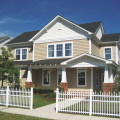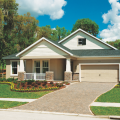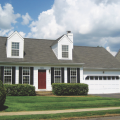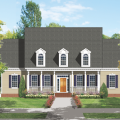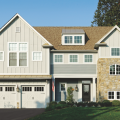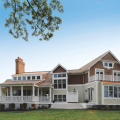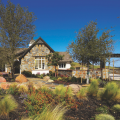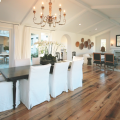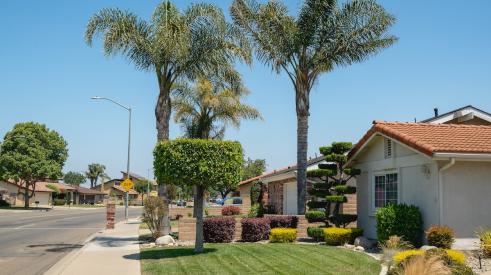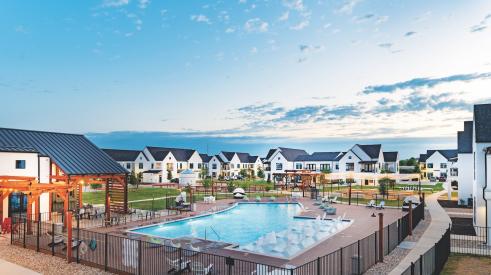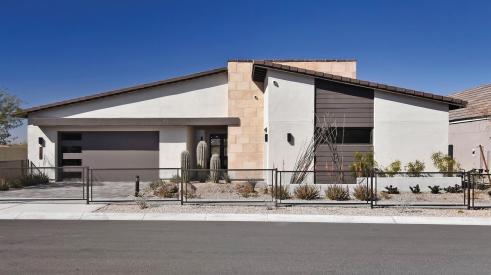While there’s plenty of eclecticism in American residential architecture today, the roots of many house styles can be traced back to the period from 1880 to 1940, when railroads expanded throughout the country.
Craftsman
Characteristics: Craftsman homes have a front porch, either full or partial width, with tapered stone columns on top of masonry piers. The windows are typically double-hung with a four-over-one or six-over-one mullion pattern in the upper sash, and are grouped together and trimmed with wide casing. Exposed rafter tails and beams or knee braces are distinctive details. Roofs are low-pitched, no steeper than 6 in 12 on a front gable roof. Roof overhangs are 18 or even 24 inches deep to accommodate brackets. Entry doors have glass panes in the upper third. There is a single dormer, often wide enough for two to three windows. The mix of exterior materials may include stone, brick, wood, concrete block, and stucco.
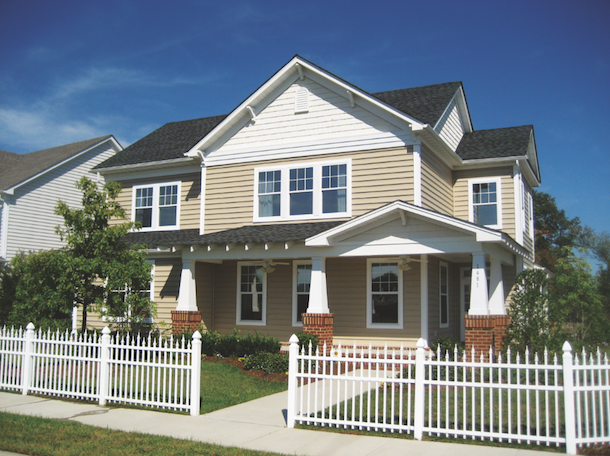
Craftsman homes may have a lot of exterior ornamentation or just a little, as in this example. The roof brackets, exposed rafter tails, and tapered porch columns atop masonry piers are signature elements of the style. Photo: James Wentling
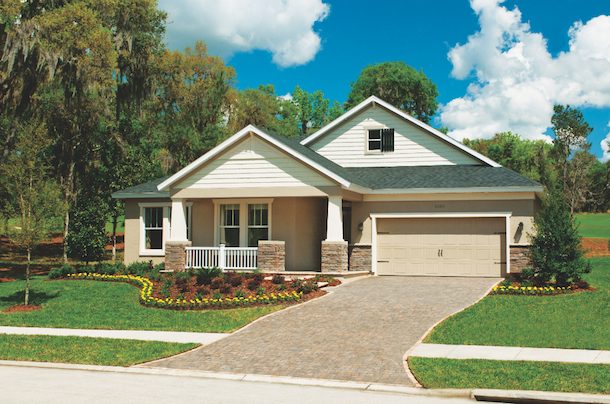
The Pinemore model is available in three different elevations including Craftsman (shown) at Southern Hills Plantation Club in Brooksville, Fla. This streamlined variation has the classic front porch with tapered columns and stone piers. Builder: GreenPointe Homes; Architect: BSB Design. Photo: Chris Johnson, Johnson Pictures, Inc.
Cape Cod
Characteristics: Distinguished by its low, broad profile, the Cape Cod is generally 1-1/2 stories and has a steeply pitched roof with side gables, double dormers, and a symmetrical front façade. Early versions had little exterior ornamentation other than pilasters surrounding the front door, but latter-day examples have front porches, shutters and window boxes, and front doors dressed up with sidelights. Cedar shake shingles are generally used for the roof and siding.
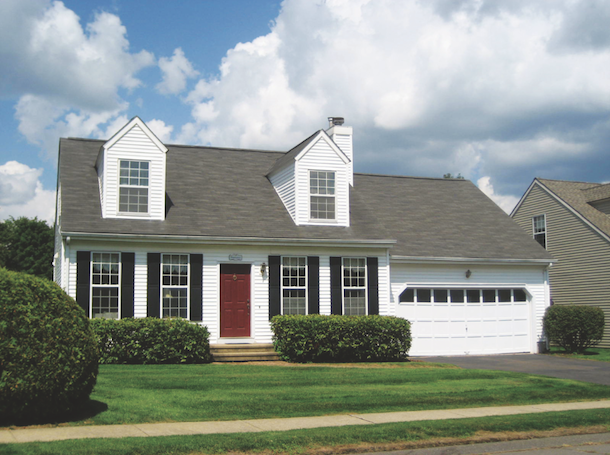
Except for the attached garage, this Cape Cod is a good representation of the original style: an economically designed house that tucks extra square footage into dormers. Early Capes had stoops rather than front porches. Photo: James Wentling
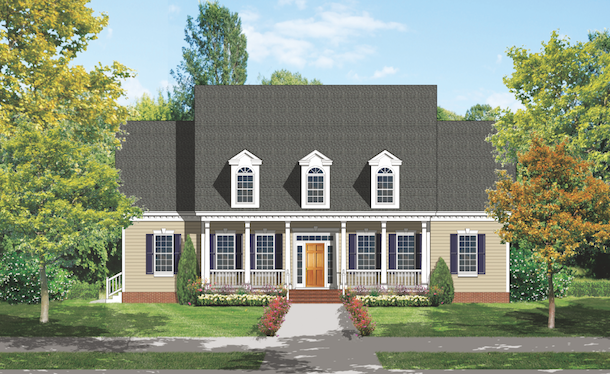
The Southern Cape is a regional variation of the Cape Cod. At 3,572 square feet, it’s considerably larger than the original Capes and has a full front porch and second-floor space for additional bedrooms, loft areas, and storage. Illustration: Wentling House Plans
Farmhouse
Characteristics: The farmhouse is a hybrid of various architectural styles, some of which came from the Old World and others that were introduced by early settlers on the East Coast. Farmhouses feature slender, vertical main forms; steeply pitched roofs with open gables; vertically proportioned doors and windows; long, deep porches; and linear, T-shaped, or L-shaped floor plans.
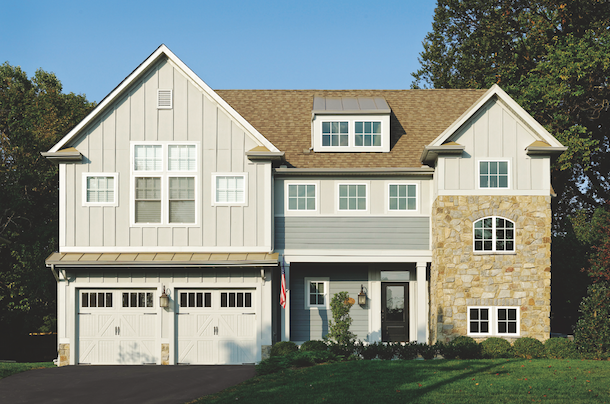
Here’s a modern take on farmhouse style. The stone accents, covered porch, and dormer windows hark back to traditional farmhouses, with more contemporary touches such as the board-and-batten siding and attached, front-loaded garage. Builder: Sean Ruppert, OPal; Architect: Gregory Sparhawk, GPS Designs Architecture. Photo: Bob Narod
Coastal
Characteristics: Coastal homes can take on many forms, from tropical cottage to New England Saltbox to shingle-style home and Mediterranean villa. The side oriented to ocean views has large windows, decks, and porches, plus doors that slide open to capture breezes. The roof forms vary from steeply pitched gables to gambrels. Deep roof overhangs shield the home from the elements. Coastal homes typically have metal roofs to stand up to harsh weather.
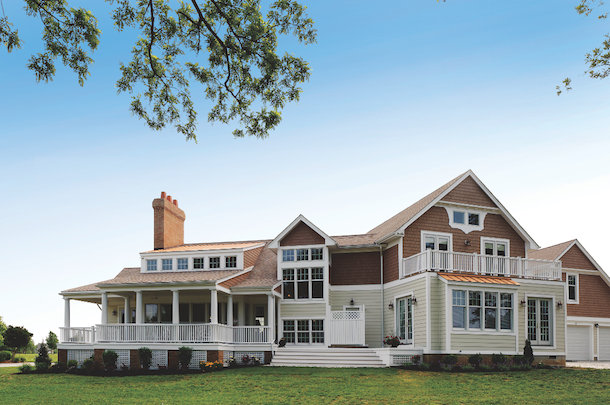
Coastal design can take many forms from New England cottages to rambling shingle-style homes, but all coastal homes have windows, porches, and decks that capture views and breezes. Builder: Joseph Downey, Olde Pointe Builders; Architect: Gregory Sparhawk, GPS Designs Architecture. Photo: Bob Narod
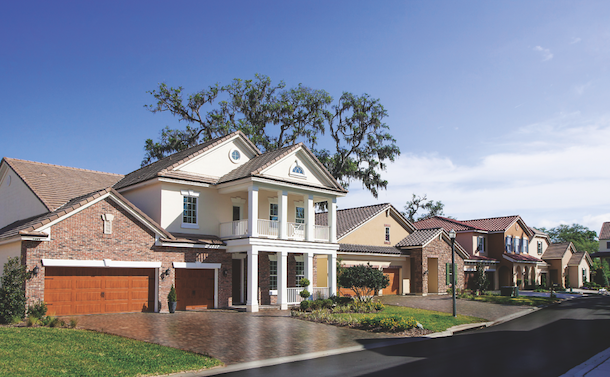
At Old San Jose on the River in Jacksonville, Fla., single-family homes incorporate styles from the surrounding neighborhood as well as new styles to give the community a fresh feel. Shown, from left, are Georgian, Tuscan, Mediterranean, and French Country styles. Builder: New Leaf Construction; Architect: BSB Design. Photo: Jacob Sharp
Wilder Pays Homage to Local Architecture

The Classic Orinda Ranch is an interpretation of the older ranch homes of Orinda, Calif., a San Francisco suburb. The home features a stone-wrapped entry portico leading through a rustic wooden gate to a covered loggia and entry foyer. Photos: Toby Ponnay Photography
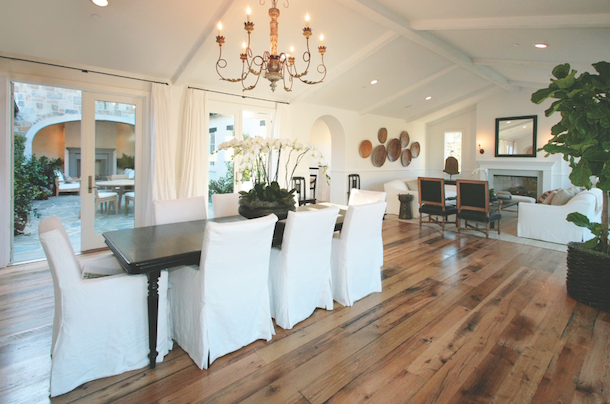
The great room has vaulted ceilings and French doors that access a stone deck and a loggia with a fireplace.
Advertisement
Related Stories
Market Data + Trends
Are Million-Dollar Homes Shrinking?
As home prices soar to new highs across the U.S., buyers are competing for more expensive homes with smaller footprints
Design
Multifamily Rental: Big House, Big Impact in Texas
At Hermosa Village near Austin, Texas, modern farmhouse-style apartment buildings and a creative amenities package make this high-density multifamily rental development a standout
Exclusive Research + Data
Design Trends Survey: What's in Store for Housing's Look and Feel
A recent survey of architects and design-minded home builders reveals what's in store for the look and feel of housing during the next three to five years



